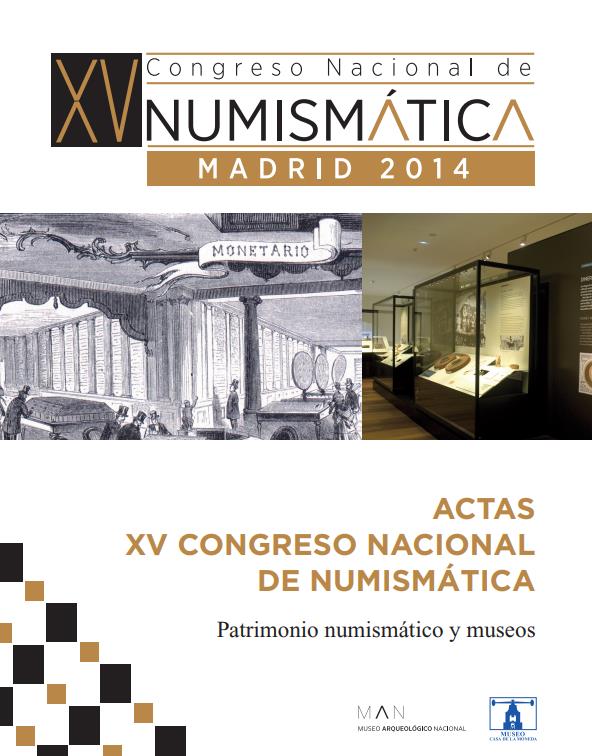Albert Estrada-Rius
The intention of this post is, basically, to explain the genesis, the challenges and the preparations prior to the holding of the 16th National Numismatic Congress, for which the museum will be the venue, from 28th to 30th November. It is entitled Coin Hoards and Finds: Protection, Study and Musealization, and it invites the numismatic community to pool and discuss the latest research associated with the subject. The aim here is to share behind-the-scenes experiences rather than to theorize about it. All those who enrol in it, or those who, when the proceedings are published and the official report on the congress is included, are curious enough to read it, will be able to experience the three days of the congress.
Museums offer a very competitive natural setting for the holding of scientific gatherings. A congress, in its various formats, continues to be an essential meeting place for professionals in a field of knowledge to pool experiences and exchange research and, in short, to generate and improve knowledge. The museum is also a privileged platform, accepting part of the challenge of disseminating the knowledge that begins when the congress ends. In this context, it moreover contributes a value that other traditional venues for scientific gatherings cannot offer: inestimable immediacy with collections that are the focus of and the raison d’être for the museum’s existence.
We are absolutely clear about the importance of holding a congress and for the museum to act as host. But, when and how did the organization process get underway?
The origins of the Numismatic Congress
The National Numismatic Congress (CNN) is the forum of reference on the subject of numismatics in Spain and, given its long history, the most traditional one. The first edition was held in Zaragoza in 1972, while the last one – the 15th edition – was held at the National Archaeological Museum in 2014 when it reopened after a long period of refurbishment.
The current holder of the rights to organize the CNN is the Ibero-American Society for Numismatic Research (SIAEN). This body organizes the congresses in collaboration with an institution responsible for their material organization. The fact of being a member of its Governing Board since 2012 has been crucial for the MNAC being able to play host to the Congress this year. Access to the sessions, dealings with the rest of the Board members and the opportunity to transfer the activity of the Numismatic Cabinet of Catalonia there directly provide a privileged position of trust to ensure the success of the candidature proposal.
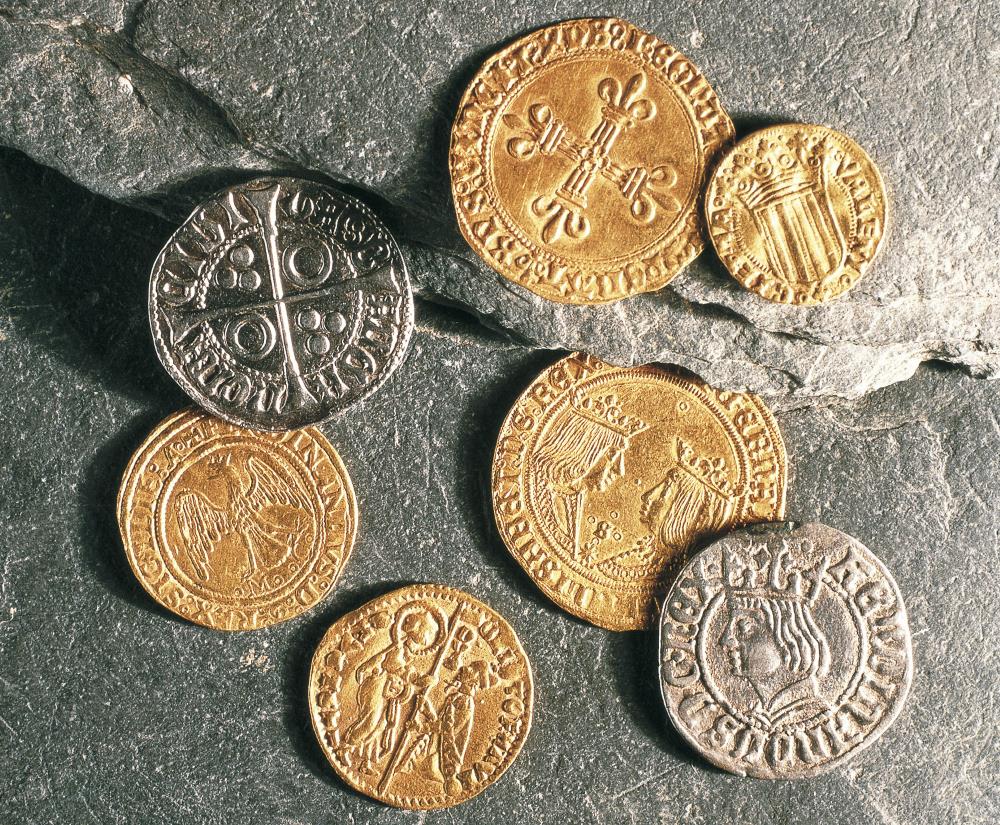
Sant Pere de Rodes hoard, first quarter of the 16th century
Grasping the opportunity
We had an objective, the favourable context, and the only thing that remained was for the opportunity to arise and to get the process underway. On this occasion the possibility of organizing the next congress came up suddenly when it was put forward at one of the sessions outside the planned order of the day. When the opportunity presented itself we had to grasp it or let it slip by. It is a step that, on a personal level, creates a certain feeling of dizziness in the sense that it means taking an unplanned risk, from considering an offer of organization before having the formal agreement of the museum, to the acceptance of the SIAEN. Evidently, the proposal was of course made on the condition of obtaining the museum’s support.
The most logical and advisable thing, however, was to bear in mind the possibility of organizing the congress, work on the proposal internally and be able to submit the plan for consideration by the rights holders when the offer was made. However, things do not always go the way they might have been planned and this was where we saw, on one hand, the capacity for reaction and improvisation and, on the other, the taking on of the abovementioned risk, although it was a controlled risk, given the museum’s flexibility and openness and the assumption of research as a strategic axis.
The architecture of the congress
With the agreement made – with reservations – at the meeting of the Governing Board to hold the congress, and with the museum’s involvement subsequently obtained, it was now necessary to:
- Submit a firm proposal for the theme
- Produce a provisional programme
- Choose the invited speakers
- Compose the scientific committee
- Put together the technical secretariat
- Seek finance
As the scientific director, at this point we were immersed in a system of double trust between the SIAEN, on one hand, and the museum, on the other. It was necessary to look for a theme that would be stimulating and at the same time scientifically topical, making the gathering necessary and useful. Distributing the speeches was an exercise somewhere between diplomacy and the construction of professional balance, on one hand, and the search for the best specialists on the subjects that were proposed to ensure excellence, on the other. Justification for the proposal of the chosen theme came with the appearance in recent years of a series of quite outstanding hoards, including the high-profile one in Tomares (Seville). The discussion about the protection and recovery of the shipwrecks of the Spanish Treasure Fleet also repeatedly emerged strongly, with sunken hoards like the one in the frigate Mercedes or the one in the San José. The basic programme emerged from the evaluation of all this, divided into thematic sessions led by the appropriate speakers. Once the programme had been approved by the museum and the SIAEN the first preparatory stage concluded.
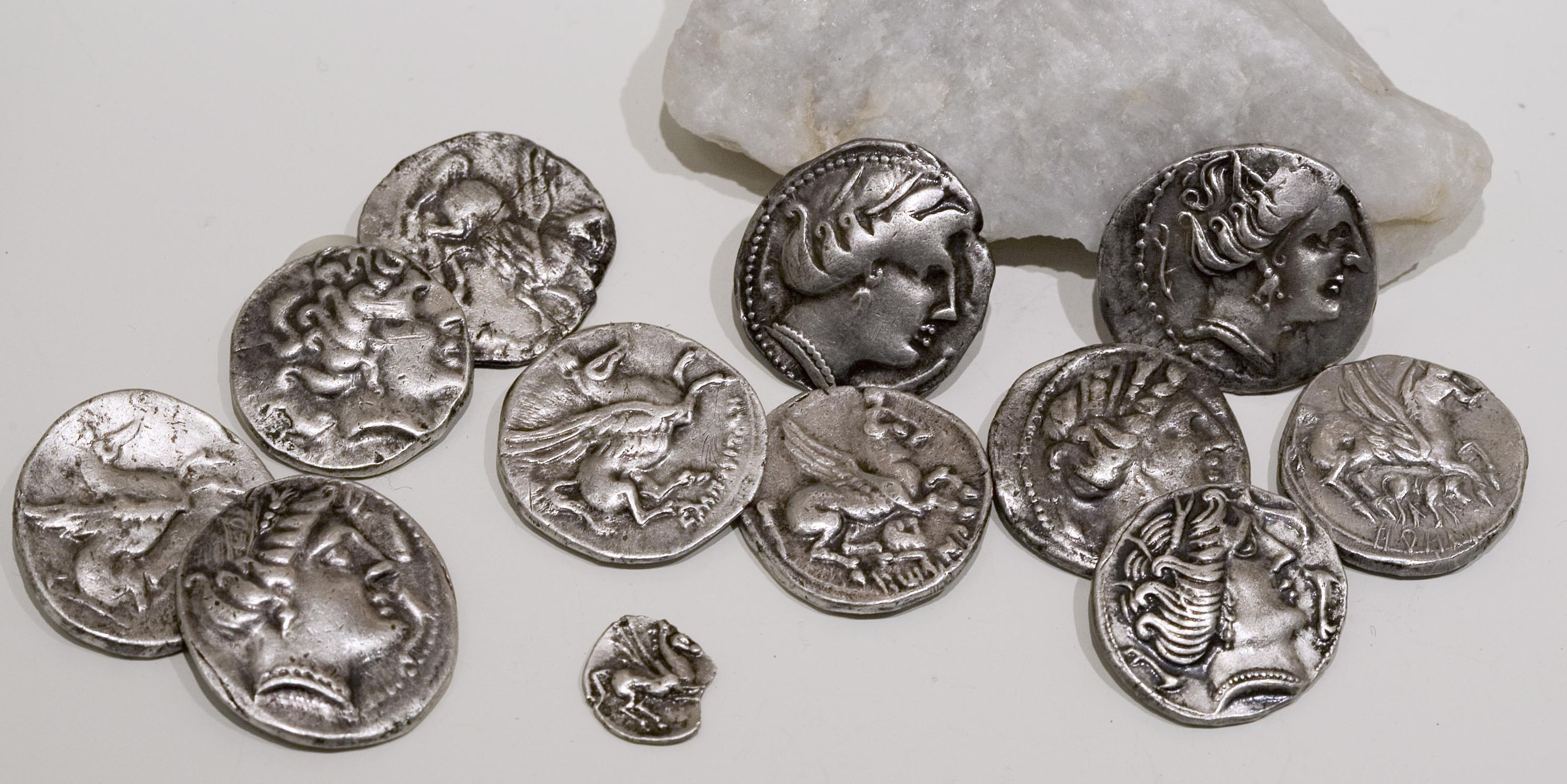
Hoard of Les Encies, End of the 3rd century BC – beginning of the 2nd century BC
Along with the scientific architecture of the congress the financial foundations had to be laid to enable it to be held. The museum managers’ guidelines were clear in the sense that the congress would only be feasible if enough external funding was obtained to make up for the museum’s budgetary deficits. With this premise it was essential to seek patronage, sponsorship, alliances and involvement. The Antiga Fàbrica de Medalles Ausió stepped in to foot the bill for organizing the event and the Fábrica Nacional de Moneda y Timbre undertook to publish the subsequent proceedings.
Internal organization
The complete museum team got moving, headed by the department of Activities for the technical part and the Numismatic Cabinet for the scientific part, to make the Congress effective, once the plan had been approved by the Museum and the SIAEN with the signing of a collaboration agreement, and the finance and the publication of the proceedings had been secured. There then followed meetings to present the project, to coordinate the activity, to prepare and close the budget. The departments of activities, communication, publications, visitor management, digital communication, museography, infrastructures, exhibitions and protocol assumed their respective roles and the congress began to take shape.
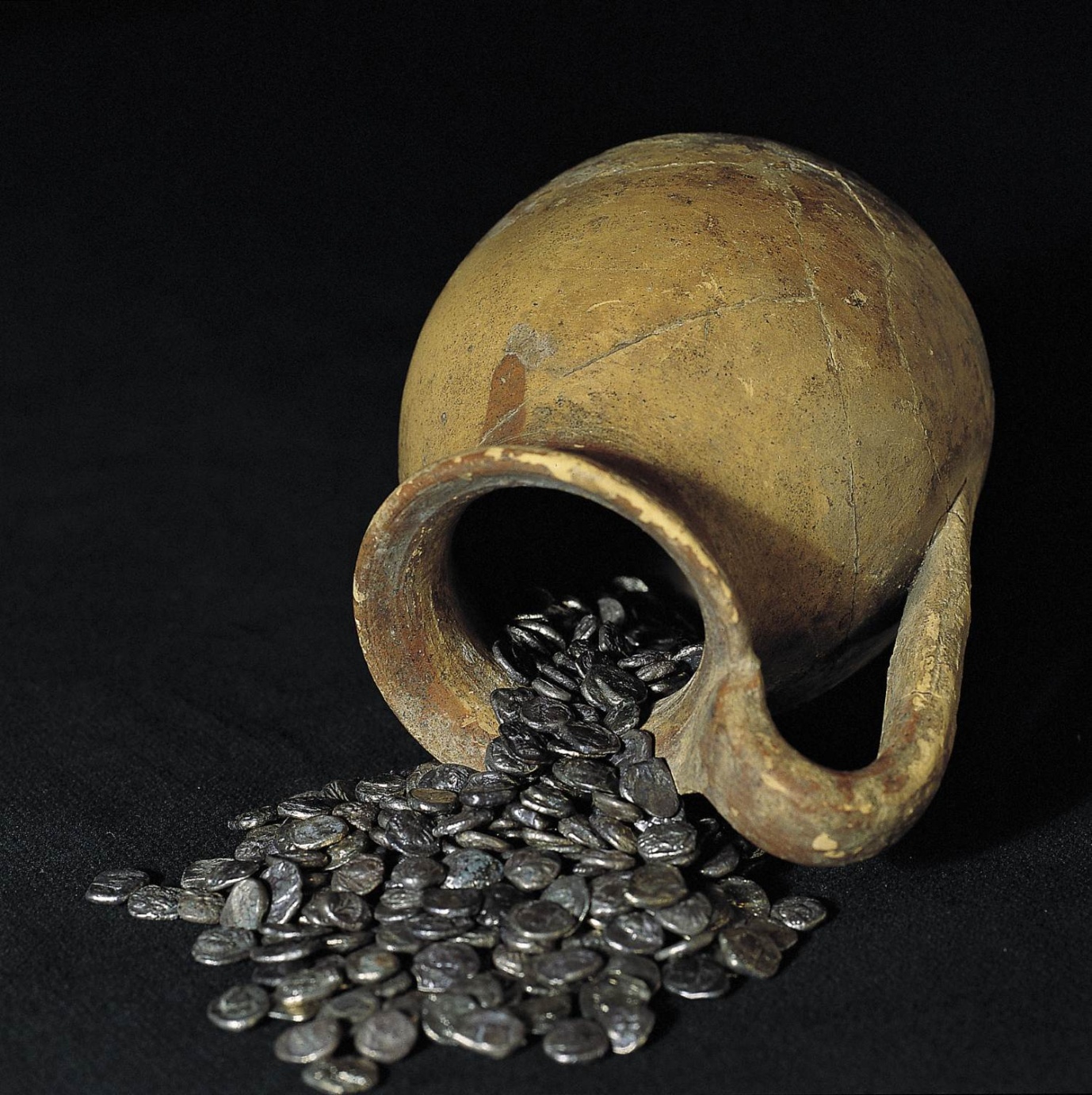
Hoard from the neapolis of Empúries, 395-375 BC
Thus, for example, the image was chosen that will identify the congress, the emblematic hoard from the neapolis of Emporion (Empúries), found in 1926, and the first promotional materials to publicize the event were designed. The space that the Congress will be occupying in the museum was considered, prepared and reserved. The programme was closed and published on the museum website, and the provisional booking period for posters and communications was opened. Proposals began to arrive and the technical secretariat and the scientific committee began their selection, piecing together the session schedules and closing the definitive programme. Meanwhile, Activities planned everything relative to the logistics: the speakers’ hotel bookings and travel arrangements, the organization of the coffee breaks between sessions and booking the restaurants where those in attendance will dine.
The Numismatic Cabinet of Catalonia, as the scientific body in charge of the event, proposed and prepared some activities to accompany the congress in two complementary directions: 1) to contextualize and integrate the gathering in the day-to-day setting of the museum or, which amounts to the same thing, for the museum to be part of the Congress, and 2) to fit the attendees into the life of the museum, and above all its collections or, equally, for the participants not to remain in a bubble and to move around the museum.
Three actions were specified:
- In the display cabinets in the entrance to the museum’s Joaquim Folch i Torres Library a display is to be prepared based on the Antiga Fàbrica de Medalles Ausió, the sponsor of the congress. The opportunity will be taken to focus on this company that operated from the early 20th century to 1970 and the various material (medals, minting instruments and documents) that it has offered as donations to the Museum in recent years.
- An itinerary was prepared, in collaboration with the conservators of the areas involved, through the recently refurbished Gothic Art and Renaissance and Baroque rooms, with the connecting thread of discovering and commenting on the aspects that are important from the point of view of numismatics.
- Two proposals complementing the main theme of the congress are to be prepared, aimed at showing the attendees the hoards and finds conserved in the GNC, and exhibited in the permanent numismatics room.
All these activities must be included on the museum website and in the online collection that will be completed on the subject of hoards in the collection. It will be one of the legacies of the event.
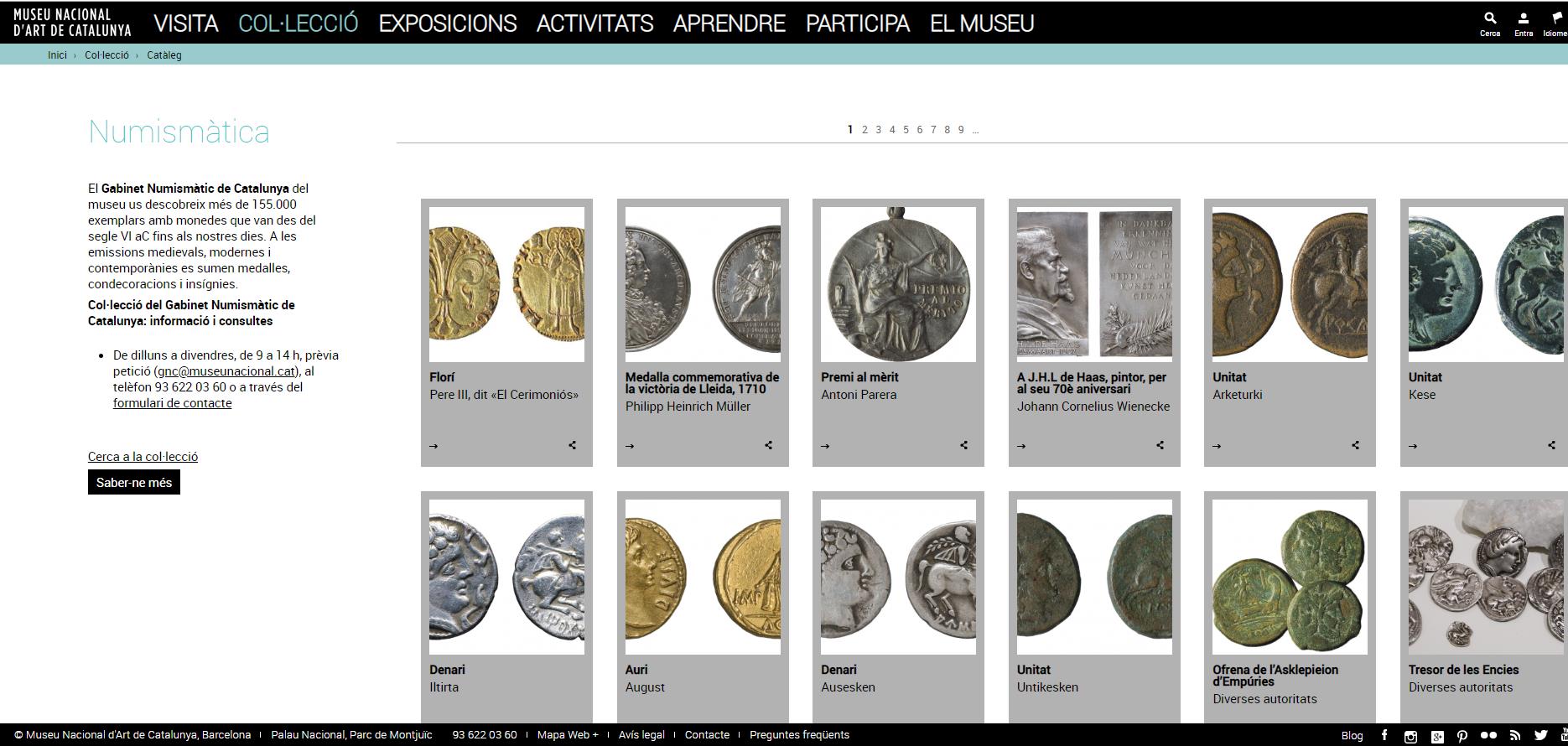
Online Catalog of the of the Numismatic Cabinet of Catalonia
Collaboration was also sought and connections were agreed on with the nearby Museu d’Arqueologia de Catalunya which will play host to the participants after the second afternoon session and which, in reference to the theme of the congress, is preparing a display cabinet with the two great hoards it conserves, Islamic coins from Tortosa and Castilian coins from Estanyol beach in Sitges.
We must not forget the choice and the preparation of the welcome pack that the participants will receive with the programme, the book of résumés and some gifts. These include a complimentary gift from the Museu de la Xocolata (Museum of Chocolate) and some books published by the museum and associated with its own treasures. This part is important because the welcome that the museum will offer the attendees at the reception after the first session, and the materials presented, are the first impression, not only of the congress, but also of the museum and the city of Barcelona.
Anyway, everything is ready! Now we are waiting for the inaugural day to arrive and then the congress can begin! We hope to see you there …
Related links
“At a glance” Numismatics itinerary
Museu Nacional d’Art de Catalunya Numismatics catalogue
Gabinet Numismàtic de Catalunya


